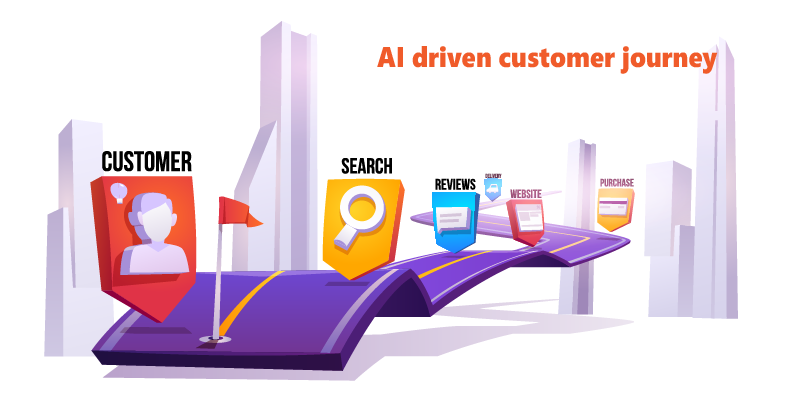AI is making an impact on our lives and, soon, the jewelry industry.
We can all agree that Artificial Intelligence (AI) is the new buzzword. We knew about its existence, but we indeed ignored it, because we were thinking of humanoid robots or other abstract ways of using this technology. AI systems currently work well for specific tasks only. They are programmed to do certain tasks. They complete these tasks as efficiently as humans, but they learn much faster than humans.
Recently, we heard about many technologies that aim to revolutionize our lives. It looks like augmented reality is good for fun but not practical. Also, we certainly don’t want to shop, socialize or do business in the metaverse as big techs predicted - at least, this is how we feel about this today.

So, what makes me think that AI will stay with us and it’s not just a trend?
AI is really groundbreaking because it saves us precious time. I’m not talking about humanoid robots here, but rather AI like ChatGPT. Millions of people tested it in the past few months. I call this the “Big Bang momentum” of AI because people have realized: this is not just a cool thing, but it can write theses about specific topics, and you can get ideas about anything within minutes. The main benefit people have realized while using ChatGPT is time-saving.
The genie is out of the bottle. By integrating ChatGPT 4 into Bing, Microsoft gave itself a new push, and the competition with Google will be fierce. Online searching is being revolutionized much faster than expected. And more industries will continue to follow.
Where AI can break into the jewelry industry first

At this point, AI is not yet a widely used technology in the jewelry industry. But where will the ice break?
I believe jewelry design is the first segment where AI can gain traction. If you haven’t heard about AI-based artwork, search for a few AI-based paintings online. What is great about this kind of AI is that you can teach different art styles. You can ask the AI to generate a cubic-style painting, for example, where a sailor is looking for the mainland. The premise for AI-generated jewelry designs is the same. We can ask for unlimited variations of designs, if we can teach AI what diamond rings should look like.
Will AI eliminate the work of CAD designers? The answer is a clear no; instead, it will serve as an inspiration and saves time for the designers.
Check out this interesting experiment, where jewelry designs were generated using Stable Diffusion AI:
AI will shape the customer journey in the jewelry industry as well

AI can help your work in a couple of different ways. We can especially see the opportunities in the marketing sector. The most mentioned use case is writing product descriptions or product metadata for the web. This is an already available option; you can learn more about this here:
Writing product posts quickly? Why not. You can start using ChatGPT for this purpose. The example can be found here:
Intelligent chatbots: this is more like an imaginary product for the time being, as I don’t know a working product that I can share. Think of a chatbot that scans and learns every content of your website, and can give quick recommendations to your clients. It’s sort of like a real-time digital shopping assistant. It will shorten the customer’s journey a lot. This is the new level of customer service.
AI & ERP software: how could this impact the jewelry management systems?
AI could be the next big thing in jewelry business management as well. However, this is a much bigger challenge than building a text-based AI like ChatGPT. ChatGPT is a conversational AI that learns from texts. It’s a predictive AI model. The difference is that an AI in jewelry management software must understand processes and recognize different patterns, which is more difficult to do.
I will try to summarize the few areas where I see the possibilities of AI-incorporated jewelry ERPs. It’s important to note that a jewelry-specific AI requires a different AI model than ChatGPT uses. This is a totally different field, and not many studies were published about similar experiments or projects as of yet.
- Forecasting: AI could analyze your historical sales data and give hints of what to expect for certain periods of time in the upcoming year. A tool like this will save time, but also improve your business management and resource handling.
- Searching inventory and matching items: two diamonds, gemstones or colored stones, that have similar attributes are worth more in pair. AI could help you identify similar items by scanning your inventory, and searching for similar items with similar characteristics.
- Performing repetitive tasks: process management or workflow management requires an advanced AI engine. Such an engine would require initial training. In the initial training step, an AI model is given a set of training data and asked to make decisions based on that information. Slowly, the AI learns the patterns by processing user feedback. If you create a piece of jewelry using the same production steps, nine times out of 10, the AI can suggest the same steps next time. Of course, process management AI is a more complex matter than this, but I just wanted to show you an easy-to-understand example.
- Reporting: reporting is available in every jewelry ERP, so that is not a new thing. What could be new is how we look for a certain report. Instead of applying certain report filters manually, I can imagine a conversational AI that runs the necessary reports, giving a text command: “Hey, PIRO AI, please run a production report for Backstreet Jewelry LLC, counting how many jobs were completed for them last year and how many of those orders were delayed.”
- Customer service: imagine a call where the AI takes the call, records the customer’s request, transcodes it, analyzes it, and categorizes it. It can send an email response to a customer, or notify the support team about a complex request. It’s not fiction, this is an already existing AI tool.
Final thoughts
Many may think that AI will make certain jobs meaningless in the jewelry industry. But that is not the case, I think. Definitely, the appearance of 3D printing in the jewelry industry eliminated manual wax carving, but I don’t see similar threats with the expansion of AI. Instead, AI will speed up certain processes, like the design process. It will change the way jewelry companies do marketing and enhance customer service. In general, AI will reduce the need for human work in certain professions by completing tasks more efficiently. Some jobs will vanish. We are yet to see how big of a step AI will mean for humanity in the evolution of technology, but we have a guess: it will be significant. Like always, the winners will be those who embrace this technology first. Jewelry companies must innovate as the world is changing at a faster pace than expected. Learn, innovate, grow, and repeat.





